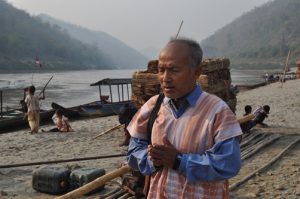To see what Chinese foreign investment looks like in the 21st century, one need venture no further than Laos, its landlocked and largely rural neighbour to the south. In recent years, Chinese companies have poured billions of dollars into roads, dams and other infrastructure projects. The most notable is a US$7 billion, 400-kilometre high speed railway line, announced last year, that will run from the southern Chinese city of Kunming to the Laos capital of Vientiane and on to ports in Thailand. It is one of several projects aimed at improving access of Chinese goods to markets in Laos and beyond.
The railway will run through Oudomxay province, a mountainous region directly south of the Chinese border in northern Laos that has already seen the effects of foreign investment. In 2002, the government earmarked the region for development including hotels, casinos and commercial centres. Highway 13, the main road, was paved. Chinese workers poured into the Boten Special Economic Zone as construction sites and towering hotels sprang up amid the verdant hills.
Jack Kurtz, a photojournalist based in Bangkok, travelled to Oudomxay last month to document the effect of China’s investment on the landscape and local people. He found sparkling new shopping centres empty of customers – the goods are too expensive for the local population – and a landscape dotted with cranes, construction and trucks. The development, particularly the paving of the road, has transformed life for many in the province, drawing people down from homes in the mountains to earn a living from tourists or truck drivers who frequent the road.


